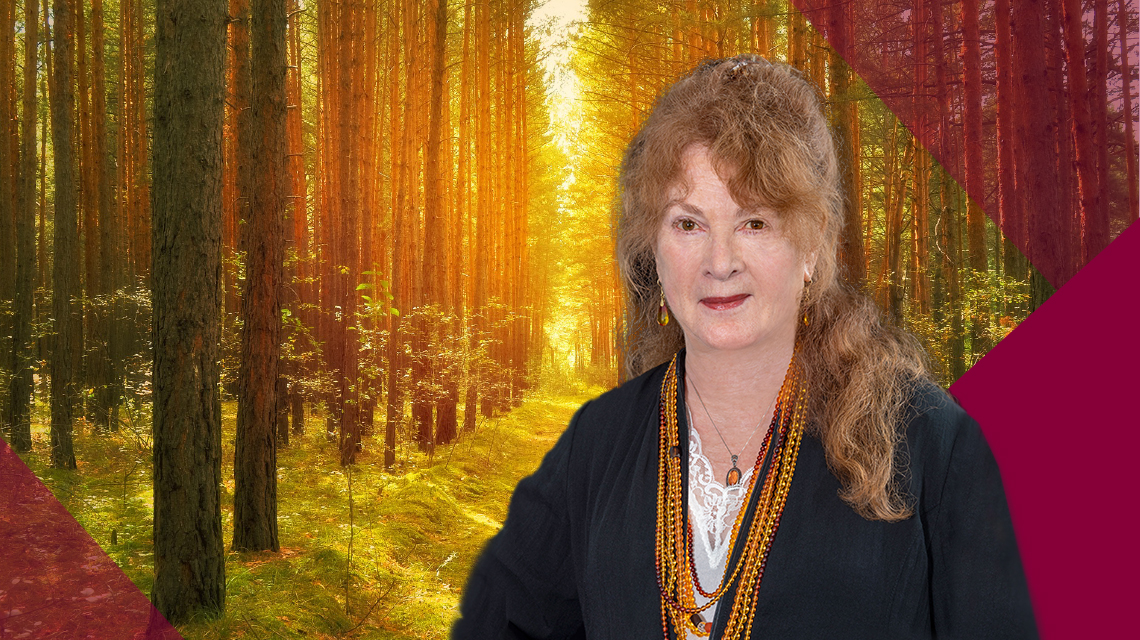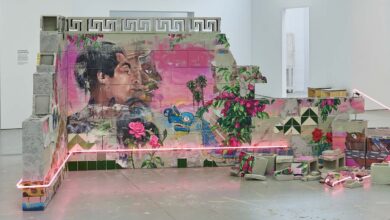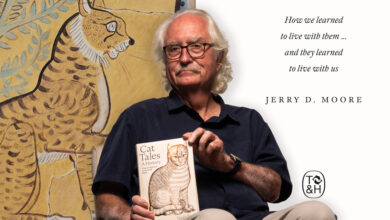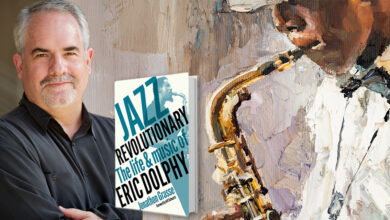
CSUDH Professor Emerita of Art Gilah Yelin Hirsch has been honored with a retrospective exhibit at the Orange County Center for Contemporary Art (OCCCA) in Santa Ana. Titled “The Archeology of Metaphor, the exhibit runs through Oct. 29 and features work from throughout her lengthy and varied career, from her earliest 1968 paintings to the present.
Hirsch, who joined the art department faculty in 1973 and taught at CSUDH for almost 50 years, is considered one of the first feminist artists. She was a founding member and wrote the manifesto for the Los Angeles Council of Women Artists, one of the first women’s art organizations. The statement protested the underrepresentation of women in Southern California museums and collections, and the group is considered a trailblazer in the realm of feminist art.
Born in Montreal, Canada, Hirsch attended the University of California, Berkeley during the mid-1960s. “I actually became an artist by accident,” Hirsch recalls. “When I was going to Berkeley, I wanted to be a writer and psychologist.” She took an art class “on a lark,” and found that she had a natural talent and inclination for it.
When her then-husband was accepted to the University of California, Los Angeles, she moved to Southern California. On a whim, Hirsch submitted 10 of her paintings to the university’s Master of Fine Arts program. “I got in,” she says, “and immediately began making paintings that started to be shown nationally and internationally.”
After obtaining her MFA in pictorial arts from UCLA in 1970, Hirsch taught art at Santa Monica College and American Jewish University before landing the job at CSUDH. At a time when women were not well-represented in art faculties, “I landed the one and only tenured painting professor job in town,” she says.
“For me, teaching at Dominguez all those years was the greatest boon in my life,” says Hirsch. “Every time I entered a studio or a classroom, people were speaking so many different languages and the varieties of ethnicities was so clear and apparent, it was enriching my life every minute.”
Hirsch’s work explores and makes connections between art, science, and spirituality. Much of her work revolves around her theory of cosmography, which argues for the natural and neurological origins of human alphabets. She has presented her work and theories at many conferences around the world since first unveiling it at a 1982 conference on consciousness sponsored by the Menninger Foundation, one of the leading organizations in psychiatric research and methodology.
She has long been one of the leaders of the International Society for the Study of Subtle Energies and Energy Medicine, and has been recognized officially by the group for her “innovative blending of science and art revealing existing relationships between forms in nature, forms in human physiology, and the forms that are present in all alphabets.”
In 1985, Hirsch received a senior artist grant from the National Endowment for the Arts. Her work has been shown in countless galleries, including the Los Angeles County Museum of Art and New York’s Whitney Museum of American Art, as well as museums and galleries in Russia, Greece, Italy, Germany, Mexico, Kenya, Israel, and other countries. Her personal archives are housed in the Smithsonian Archives of American Art in Washington, D.C.
Hirsch was named chair of CSUDH’s art department in 2001. Despite opportunities to move to larger, better-known schools, Hirsch elected to remain at Dominguez Hills throughout her career. “Ivy League schools would have welcomed me, but I felt they didn’t really need me,” explains Hirsch. “And I didn’t really need them. Dominguez was a unique experience in this country and most likely in the world. I learned so much from my students.”
Although she retired two years ago, Hirsch points out, “I still call it ‘our’ school. It’s always going to be my school or our school. Working there is a unique gift to anyone who has an open mind and who’s willing to learn from the students. I treasured my experience at CSUDH.”
Hirsch’s unique, abstract style has changed and developed over time, an evolution that the OCCCA exhibit traces from the very beginning of her career. The exhibition also includes her work in other mediums, including photography and film.
Prestigious art publisher Skira has released a book to accompany the exhibit, also titled Archeology of Metaphor. “I’m tremendously pleased that they are publishing this book about my work and my life,” she says. “I’m thrilled with the recognition, and very grateful to (curator and author) Donna Stein, who put together the exhibit and put the book out into the world. It’s quite an honor.”
Hirsch gives some of the credit for her success to a brief correspondence she had with Albert Einstein when she was just 10 years old. Seeing all the conflict in the world, Hirsch wrote to Einstein and asked how he could reconcile being the world’s greatest scientist with believing in the God of the Old Testament.
“Within two weeks, I received a letter back from him,” recalls Hirsch. “The main line of that letter said, ‘Always form your opinions according to your own judgment.’ This sentence really guided my life and continues to do so. It’s the main thing that I hope to pass on to my students, to others in my life and the world. If you have an idea that you believe in, go for it.”
“Archeology of Metaphor: The Art of Gilah Yelin Hirsch, 1968-2022” is currently on display at the Orange County Center for Contemporary Art (OCCCA) in Santa Ana. The exhibit runs through Oct. 29. Hirsch will be conducting a guided walkthrough of the exhibit on Saturday, Oct. 22 at 1 p.m.









